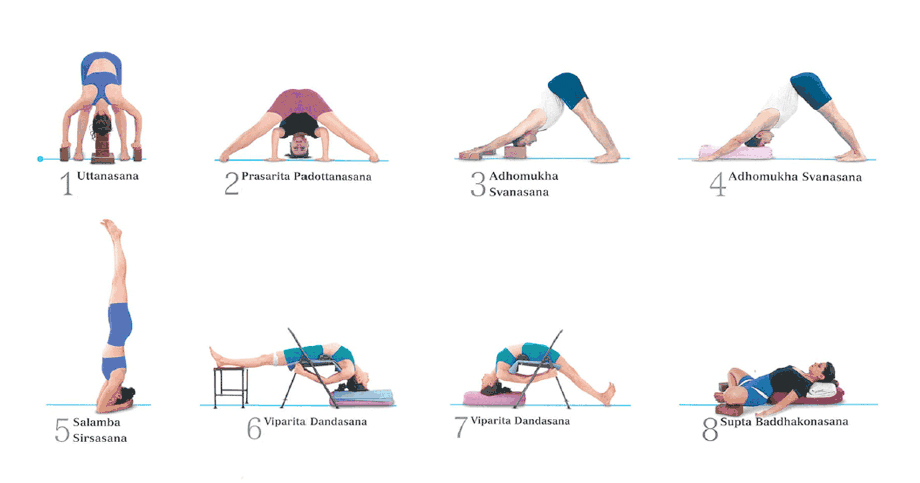
The practice of yoga is the primary activity of yogis, as it is a form of discipline that combines body postures and meditation. Most of us know the sun salutation. But what is a yogi exactly? This article will explore the history, etymology as well as the practice of yoga. This article will focus on the practices of yogis and the vocabulary they use.
Your first step in becoming a yoga teacher is to define who you are. There are many types, each with their own special practices. Depending upon the practitioner's goals and definitions, the term 'yogi' may seem broad. A person can limit the scope of a yogi to one type. A yogi could be either a male or female.

A yogi is someone who has devoted themselves to yoga. Yogis strive to live a life that follows the principles of yoga. They also make lifestyle choices that push them toward sattva. A "yogi" is someone who strives for harmony and balance in life. A 'yogi' is generally a vegetarian and gets eight hours of sleep a night. They are not interested in drama, which makes them more suited to the practice of yoga.
You must be committed and dedicated to becoming a yoga teacher. Once a yoga guru has reached enlightenment, they can be an influence on the lives of others. A yogi must also practice self-reflection to help them see themselves clearly and overcome any obstacles. It is not possible to become a "yogi" quickly.
A person who does yoga is called a yogi. Yogis can be married, or not, and they may have or have no religious affiliation. A yogi, regardless of their non-religious status should be able to do yoga to reach enlightenment. A yogi should have a commitment to spirituality and not to any particular religion. In fact, a 'yogi' is someone who practices yoga with the intention of reaching enlightenment.

A yogi should practice yoga with a goal. They must practice daily, regardless of distractions and mental obstacles. It doesn't matter if it is a guru or yogi, they must dedicate themselves to the practice. To achieve the highest levels of enlightenment, it must be willing to study regularly. It is important that a "yogi" devotes their practice.
A 'yogi' is a person who values enlightenment, and is often a retreat from society. They avoid social interactions, do not post pictures of their progress, and do not share their daily schedules with others. They eat only plant-based foods and do not eat more than twice per day. Some yogis even stop eating caffeine and avoid caffeine altogether. What is a yogi?
FAQ
Do Men Need A Gym Membership?
For men, a membership to a gym is not required. However, your money will be more valuable if you join a gym.
Many gyms offer free trial memberships so you can try the facilities out before paying for anything.
You can use the gym whenever you like, and it won't cost anything. You can cancel or modify your membership anytime you feel you don't like it.
What kind of food should I avoid when trying to lose weight?
Trans fats should be avoided. Trans fats can raise LDL (the unhealthy) cholesterol levels while lowering HDL levels (the good).
Trans fats are commonly found in fast food, deep-fried and packaged baked goods as well snack cakes and other processed foods.
These unhealthy fats also contribute to inflammation, leading ultimately to heart disease or diabetes.
Avoid foods containing artificial sweeteners. Artificial sweeteners may increase your chance of getting cancer.
These chemicals are used in everything from soft drinks to chewing gum to candy bars. They can also be found in other foods like meat, poultry, and eggs.
Artificial sweeteners can be saccharin or cyclamate, sucralose, sorbitol or aspartame.
The American Heart Association suggests that you avoid these chemicals as they can cause DNA damage in your cells.
Is Cardio Better Than Strength Training?
Both are equally excellent. For those who want to gain muscle quicker, cardio is a better choice.
Cardio burns more calories per minute than strength training and burns more fat.
Strength training is a great way to build muscle mass. However, it takes more effort than cardio.
Cardio Exercise: Good or Bad for Your Health?
Cardiovascular exercise is a great way to improve your cardiovascular health. It increases blood circulation, strengthens the heart muscle, boosts stamina, aids in weight loss, and gives you more energy.
Cardiovascular exercise includes running, biking, hiking, swimming, tennis, basketball, soccer, volleyball, football, etc.
Cardio exercises should not be done at high intensity. This could cause injury.
If you feel fine, only do the cardiovascular exercise.
You should never push yourself beyond your limits. This could lead to injury.
Warm up is the best way to start cardiovascular exercise. Start slowly increasing your intensity.
Listen to your body. If you feel pain, stop doing cardio exercise immediately.
Also, after a cardiovascular workout, it's advisable to take a rest. This gives your muscles the chance to heal.
To lose weight, you should include cardiovascular exercise in your daily routine.
It is the best way for you to lose calories and decrease belly fat.
What is the best 7-day workout program?
A seven-day exercise program should consist of three days per week of cardiovascular training (running, biking, swimming), two strength exercises (using free weights, weight machines), and one flexibility/core workout (yoga, Pilates). Each activity should be done at least once per week. Each session should last no more than 45 minutes.
Cardiovascular Exercise: Running/Biking/Swimming
It is important to complete at least 60 minutes of cardio per week. You can aim for 75 minutes a week for best results. Cardio exercise can improve blood flow and stimulate muscle development.
Strength Training
While cardio exercises target the heart and lungs, strength training targets the muscles and bones. Strength training can help you burn calories even when you're not working out.
Flexibility & Core Workouts
Core and flexibility exercises are great ways of strengthening your whole body. Both yoga or Pilates are great options.
Is Yoga Beneficial?
Yoga has been around for thousands of years and is now very popular. Yoga is very popular with celebrities as well as ordinary people who wish to be fit and healthy.
Yoga is great for strengthening your muscles and stretching them. It calms you down and relaxes you.
Yoga is more focused on breathing than other forms of exercise.
Different poses can be practiced to increase flexibility and balance.
Statistics
- According to the American Academy of Dermatology (AAD), men over 50 are at a heightened risk of developing it. (healthline.com)
- 10 pounds in a month is likely during a lean bulking phase, especially for beginners. (muscleandstrength.com)
- By John Thompson Take a whopping 38% off a set of PowerBlock Pros. (menshealth.com)
- According to the American Heart Association, blood pressure should be checked at least once every two years, beginning at age 20. (my.clevelandclinic.org)
- Get free shipping and 25% off today. (healthline.com)
External Links
How To
What nutrients does a person need every day?
For healthy growth and development, men need to eat a balanced diet. The body needs vitamins, minerals as well as proteins, carbohydrates and fats.
Males also require specific nutrients at certain times of the day. To give you an example, the body uses energy it receives from food to make hormones and antibodies. Protein is needed to build muscles and repair tissue damaged when you wake up.
Your body stores extra energy as glycogen and breaks down fat at night. Your body will still need nutrients, but it will require fewer calories during this time. You might have an occasional snack during the night if your stomach is feeling hungry.
You need to eat enough carbs and protein when you exercise. You may feel sore muscles if you exercise hard.
To prevent this, you must consume carbs and protein within 2 hours of training. To provide energy, your body will begin to break down stored glycogen.
In addition, you must consume protein immediately after completing your workouts. This prevents the breakdown of muscle tissue that occurs while you sleep.
Your body can produce lactic acid during intense physical activity. It is a form of lactic acid that builds up in the bloodstream. This causes fatigue. This can be avoided by eating foods high in carbohydrates like fruits and vegetables.
Carbohydrates offer your body the energy it needs for recovery from exercise.
Additionally, lean meats, fish and eggs, dairy products, yogurt, cream, cheese, yogurt and beans can be added to your diet.
All of these foods contain high quality protein. Protein promotes muscle growth, and helps repair damaged tissues. It also provides the amino acids your body needs to produce sex hormones and testosterone.
For healthy skin, hair and joints, it is important to eat enough fats. Healthy men require between 20% and 35% of total caloric intake from fat.
Fat is good for your heart and helps you fight cancer. Your brain also functions properly thanks to fat.
You can get the majority of the fats that you need from vegetable oils such as soybean oil.
These oils have high amounts of monounsaturated oil fatty acids, (MUFAs). MUFAs help lower cholesterol and reduce inflammation. They protect your cells against free radical damage.
Saturated Fats (SFAs), which are mostly found in animal products like meat, butter, and dairy products, include LDL ("bad") cholesterol. SFAs raise LDL ("bad") cholesterol and increase triglycerides. They are also good for weight loss and belly fat.
Plant-based oils such as vegetable oil, nuts, seeds, or grains are rich in polyunsaturated fats (PUFAs). PUFAs improve cardiovascular function and decrease inflammation. They are also good for controlling blood sugar and cholesterol.
Low HDL ("good") cholesterol can lead to erectile problems in men. A high intake of saturated fats leads to higher levels of bad cholesterol.
Men who eat lots of red meat or pork can develop prostate problems. This is because these foods contain high amounts of nitrates. Nitrites convert to nitrosamines when cooked at high temperatures. These compounds cause cancer.
Many processed meats are high in nitrites, and other dangerous chemicals. Avoid them completely.
The American Heart Association recommends limiting red meat intake to two meals per week. Instead, choose poultry, fish, legumes, tofu, whole grain bread, and cereals.